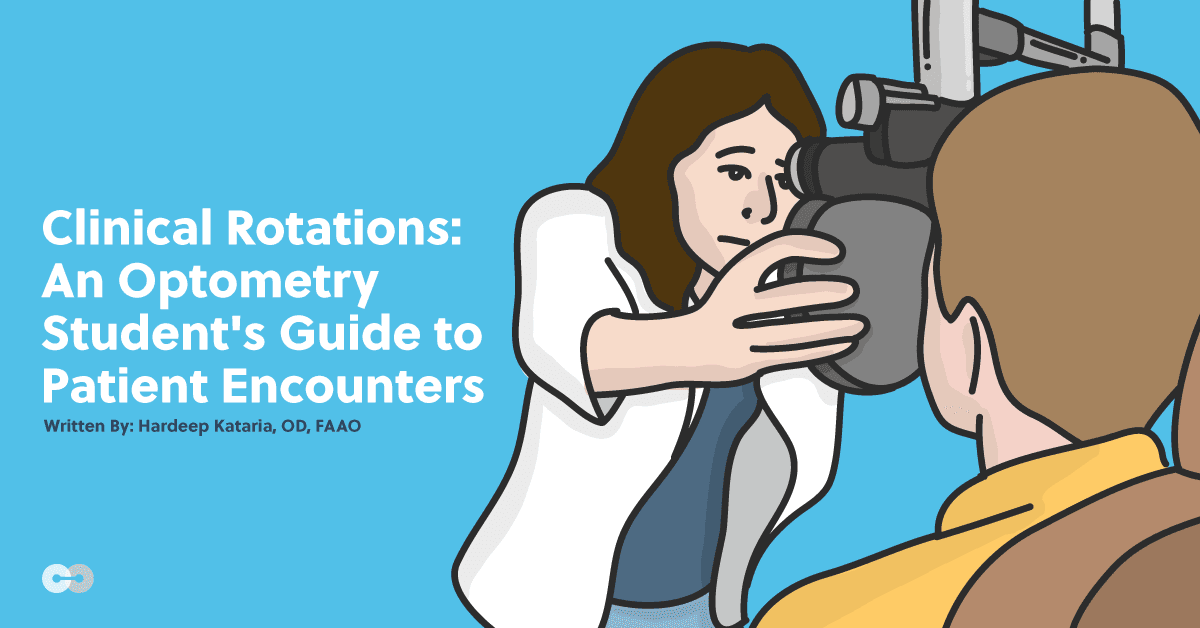Before you start the patient encounter
- Review the chart if the patient is established. Familiarize yourself with diagnoses and related findings. For example, you can use your reference materials to quickly remind yourself of the type of contact lens the patient is using.
- If the patient is new, start to formulate a plan in your mind. For example, what ADD prescription would a 54 year old need?
Improve your flow in the exam room
- Time yourself and keep a log for each type of encounter. This is a sure way of analyzing your efficiency over time.
- Keep talking to your patient throughout the examination to expand on his/her chief complaint. You do not have to ask all the questions at the very beginning. Encourage a natural conversation.
- Create “stop points” for yourself throughout the examination to notate your findings. For example, perform all functional entrance testing first, then stop to notate, rather than notating after each individual test.
- Make a note of any abnormal findings as you go; normal findings can wait until after you have administered dilating drops.
While the patient is dilating
- Complete your exam findings.
- Synthesize an assessment and plan for the diagnoses you already know, prepare your final prescriptions and any patient recommendations or education materials.
Complete the exam
- Finalize your patient recommendations. Take ownership of your assessment and plan to present to your preceptor.
- If you do not know the answer, take ownership and ask questions to aid in your understanding.
Presenting to your preceptor
- Organize your thoughts and present your findings systematically; i.e. from the anterior to posterior segment.
- Engage in discussion with your preceptor about your differential diagnoses. Ask questions.
- Be teachable! This is very important. Open your mind to learning a different technique to perform a procedure, or treating a corneal ulcer differently than what you were taught in the classroom. Medical conditions are complex and there are often various ways to treat one disease process. Try not to be rigid in your thought process; instead, be curious and willing to learn.
After the patient leaves
- Each case is a learning opportunity. Keep a journal or a log of what each encounter has taught you. The lessons can be related to performance and accuracy, or to a disease process. Examples are, “do not use too much fluorescein during applanation as it will overestimate the IOP readings, or “asymmetric diabetic retinopathy warrants assessment of carotid artery disease.” Review your journal at the end of each week.
- Set goals for yourself. If it took you 120 minutes to perform a complete eye examination, try to reduce it by ten minutes next week.
- My best advice to understanding a disease process is to always refer to anatomy. Do not memorize facts; instead, understand the changes occurring at the microvascular level to understand diabetic retinopathy.
- Refer back to major studies to understand standard treatment protocols.
Use your resources
- Use Eyerounds.org to teach yourself how different conditions can present.
- Read articles published in Review of Optometry and complete the CE quizzes to test your knowledge.
- Review your class notes pertaining to your patient encounters daily.
Don't forget to check out our downloadable clinical cheat sheets!
How to navigate these scenarios
You do not formulate a correct or accurate assessment and plan.
You do not perform a refraction accurately.
You are becoming stressed and overwhelmed in the exam room.
You are having difficulty with refraction. It is a particularly difficult case, and you are “spinning your wheels.”
Final thoughts
JUST IN: 2024 Optometry Student Report
The newly released 2024 Optometry Student Report features insights from 300+ optometry students about the optometry school experience and more!
Get the new report >>
